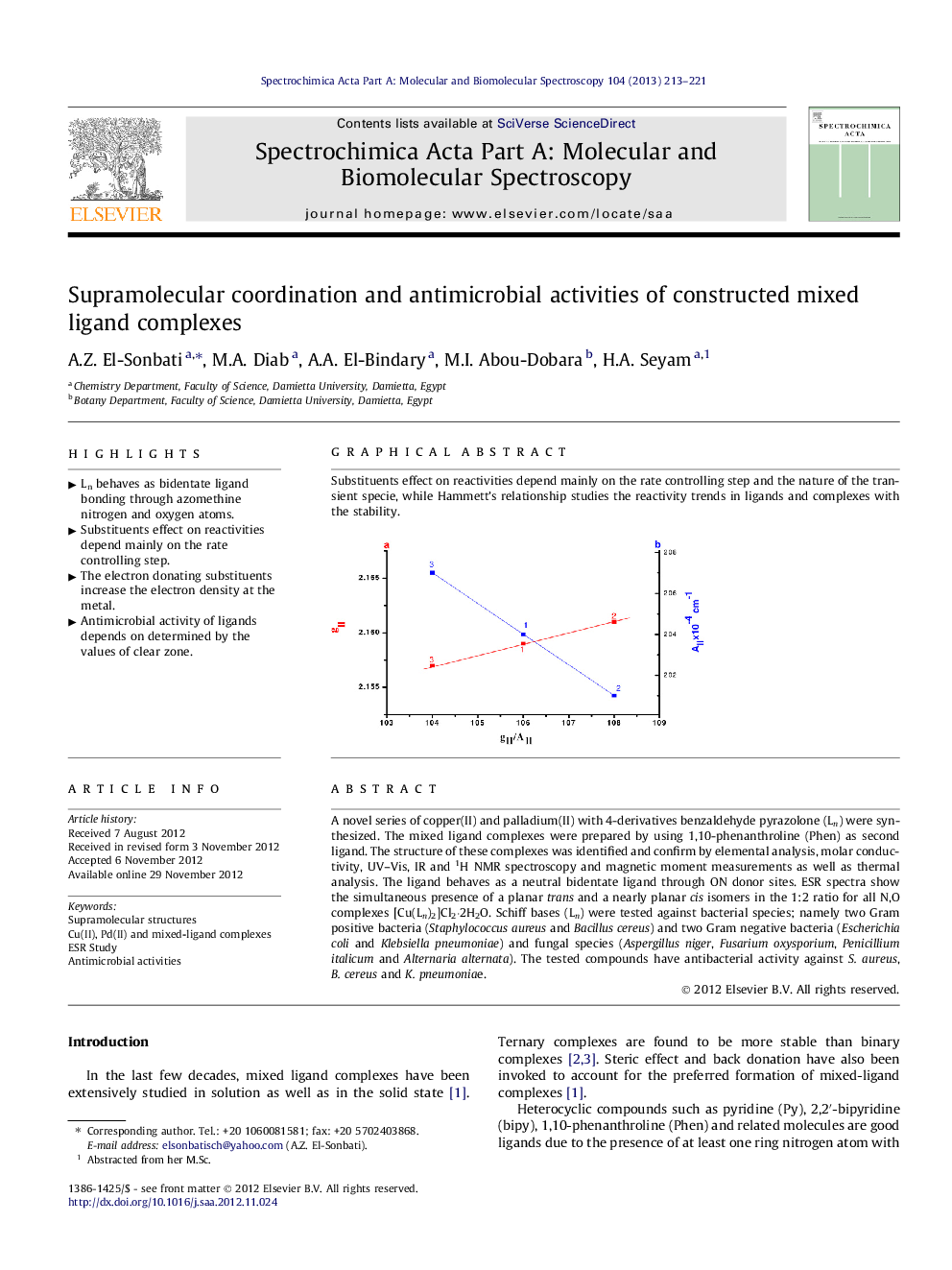| Article ID | Journal | Published Year | Pages | File Type |
|---|---|---|---|---|
| 1231212 | Spectrochimica Acta Part A: Molecular and Biomolecular Spectroscopy | 2013 | 9 Pages |
A novel series of copper(II) and palladium(II) with 4-derivatives benzaldehyde pyrazolone (Ln) were synthesized. The mixed ligand complexes were prepared by using 1,10-phenanthroline (Phen) as second ligand. The structure of these complexes was identified and confirm by elemental analysis, molar conductivity, UV–Vis, IR and 1H NMR spectroscopy and magnetic moment measurements as well as thermal analysis. The ligand behaves as a neutral bidentate ligand through ON donor sites. ESR spectra show the simultaneous presence of a planar trans and a nearly planar cis isomers in the 1:2 ratio for all N,O complexes [Cu(Ln)2]Cl2⋅2H2O. Schiff bases (Ln) were tested against bacterial species; namely two Gram positive bacteria (Staphylococcus aureus and Bacillus cereus) and two Gram negative bacteria (Escherichia coli and Klebsiella pneumoniae) and fungal species (Aspergillus niger, Fusarium oxysporium, Penicillium italicum and Alternaria alternata). The tested compounds have antibacterial activity against S. aureus, B. cereus and K. pneumoniae.
Graphical abstractSubstituents effect on reactivities depend mainly on the rate controlling step and the nature of the transient specie, while Hammett’s relationship studies the reactivity trends in ligands and complexes with the stability.Figure optionsDownload full-size imageDownload as PowerPoint slideHighlights► Ln behaves as bidentate ligand bonding through azomethine nitrogen and oxygen atoms. ► Substituents effect on reactivities depend mainly on the rate controlling step. ► The electron donating substituents increase the electron density at the metal. ► Antimicrobial activity of ligands depends on determined by the values of clear zone.
